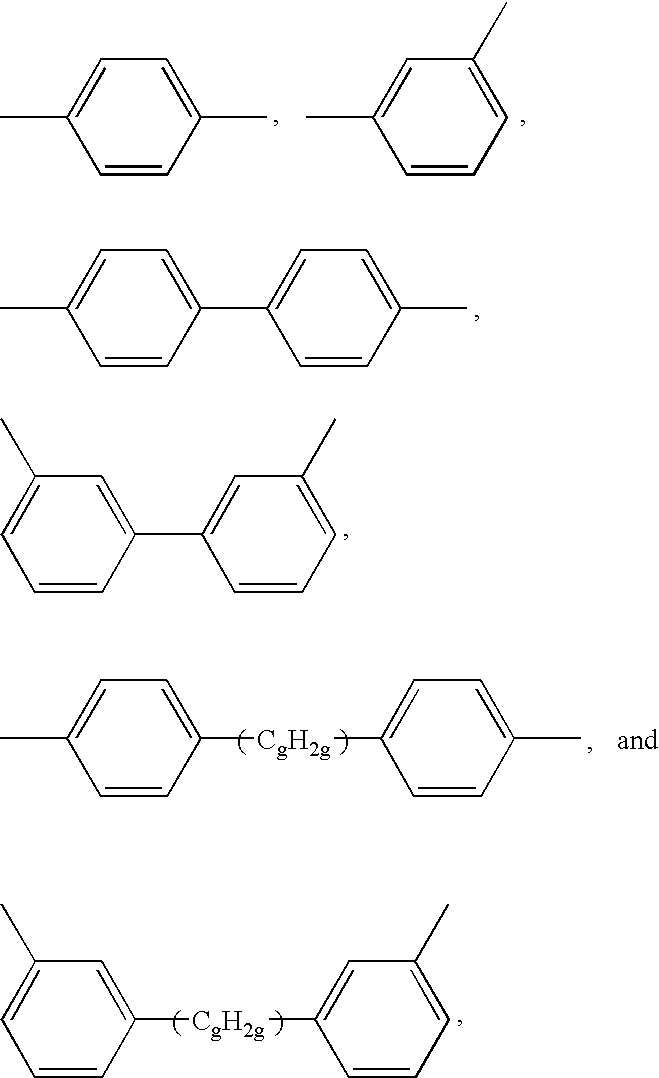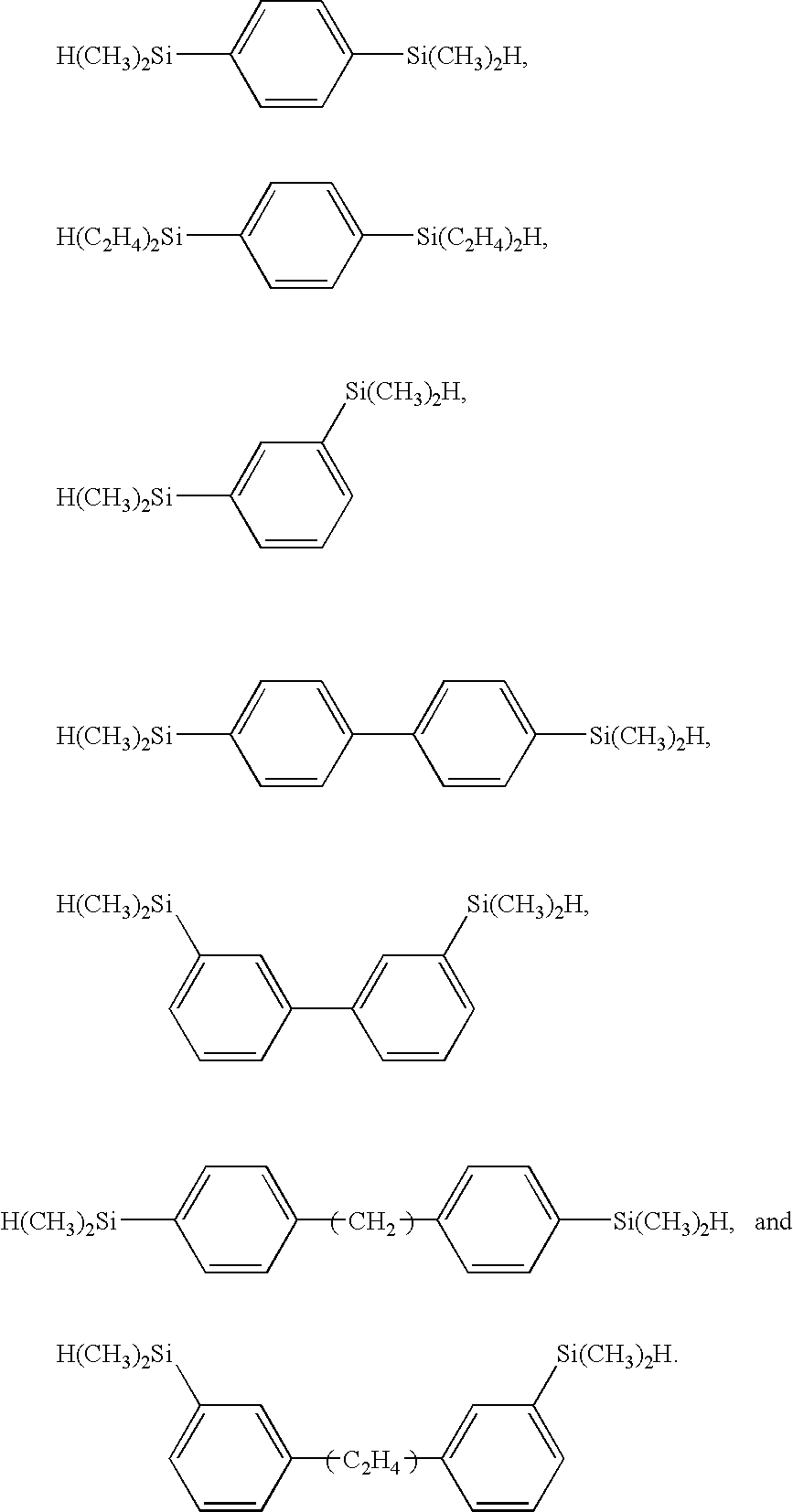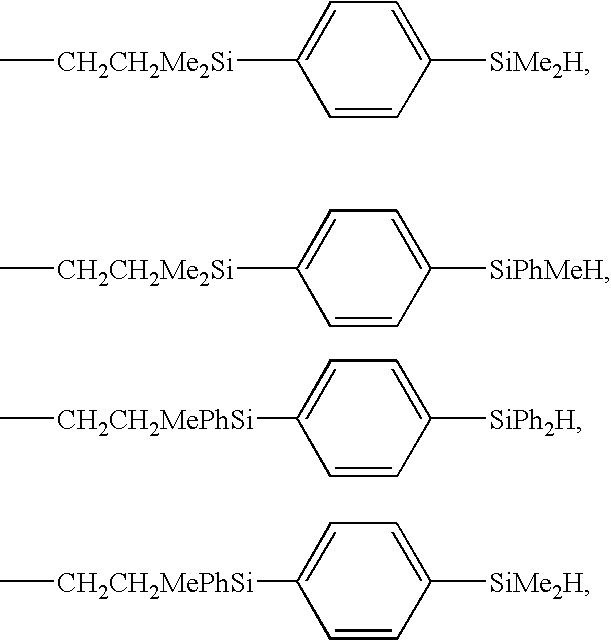Silicone Resin Film, Method of Preparing Same, and Nanomaterial-Filled Silicone Composition
a silicone resin and film technology, applied in the direction of coatings, etc., can solve the problems of limited utility of free standing silicone resin films, and achieve the effects of high thermal stability, flexibility, and mechanical strength
- Summary
- Abstract
- Description
- Claims
- Application Information
AI Technical Summary
Benefits of technology
Problems solved by technology
Method used
Image
Examples
example 1
[0184]This example demonstrates the preparation of a chemically oxidized carbon nanofiber. Pyrograf®-III carbon nanofiber (2.0 g), 12.5 mL of concentrated nitric acid, and 37.5 mL of concentrated sulfuric acid were combined sequentially in a 500-mL three-neck flask equipped with a condenser, thermometer, Teflon-coated magnetic stirring bar, and a temperature controller. The mixture was heated to 80° C. and kept at this temperature for 3 h. The mixture was then cooled by placing the flask on a layer of dry ice in a one gallon pail. The mixture was poured into a Buchner funnel containing a nylon membrane (0.8 μn) and the carbon nanofibers were collected by vacuum filtration. The nanofibers remaining on the membrane were washed several times with deionized water until the pH of the filtrate was equal to the pH of the wash water. After the last wash, the carbon nanofibers were kept in the funnel for an additional 15 min. with continued application of the vacuum. Then the nanofibers, sup...
example 2
[0185]The oxidized carbon nanofiber of Example 1 (0.028 g) was mixed with Silicone Base A (10.04 g) in a glass vial, followed by the addition of 3.0 g of heptane. The vial was placed in an ultrasonic bath for 210 min. The mixture was then subjected to centrifugation at 1500 rpm for 30 min. The supernatant was transferred to a clean vial and kept under vacuum (45 mm Hg) at 50° C. for 90 min. to remove most of the heptane.
example 3
[0186]The oxidized carbon nanofiber of Example 1(0.12 g) was mixed with Silicone Base B (11.06 g) in a glass vial, followed by the addition of 3.0 g of heptane. The vial was placed in an ultrasonic bath for 210 min. The mixture was then subjected to centrifugation at 1500 rpm for 30 min. The supernatant was transferred to a clean vial and kept under vacuum (45 mm Hg) at 50° C. for 90 min. to remove most of the heptane.
PUM
| Property | Measurement | Unit |
|---|---|---|
| Temperature | aaaaa | aaaaa |
| Fraction | aaaaa | aaaaa |
| Fraction | aaaaa | aaaaa |
Abstract
Description
Claims
Application Information
 Login to View More
Login to View More - R&D
- Intellectual Property
- Life Sciences
- Materials
- Tech Scout
- Unparalleled Data Quality
- Higher Quality Content
- 60% Fewer Hallucinations
Browse by: Latest US Patents, China's latest patents, Technical Efficacy Thesaurus, Application Domain, Technology Topic, Popular Technical Reports.
© 2025 PatSnap. All rights reserved.Legal|Privacy policy|Modern Slavery Act Transparency Statement|Sitemap|About US| Contact US: help@patsnap.com



